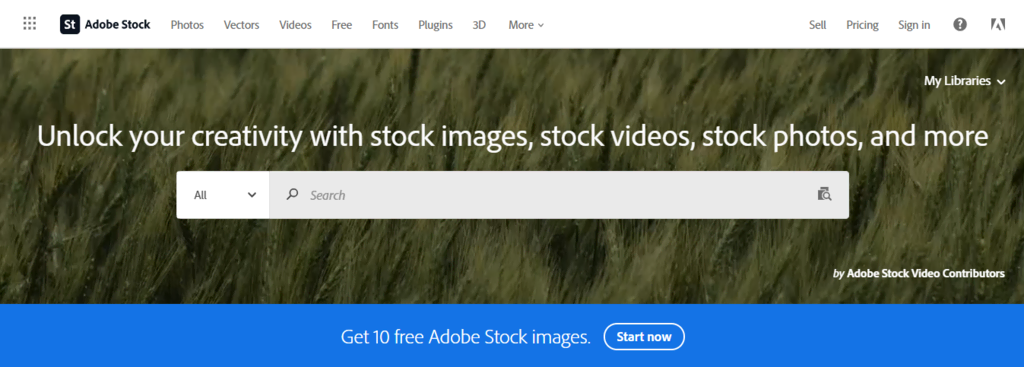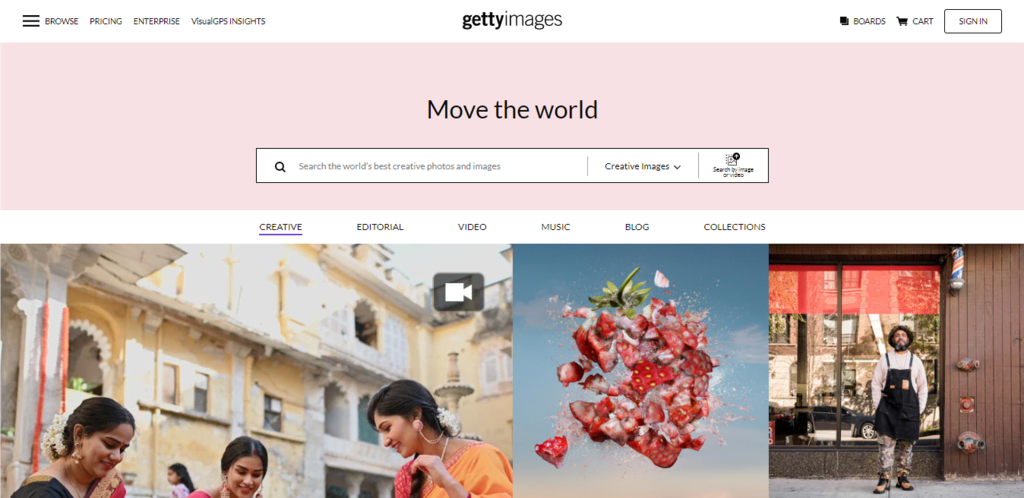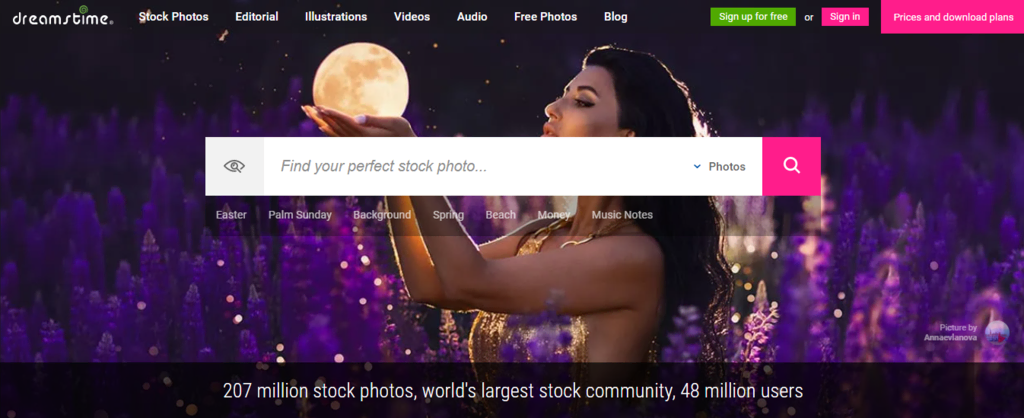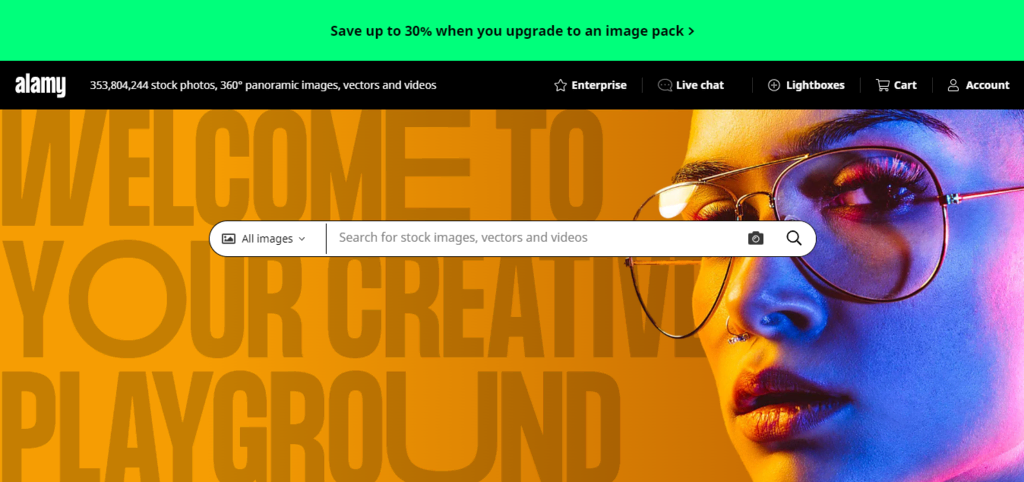Selling Photos Online is one of the ways to make money online! You’re probably thinking: “I’m just a beginner, how can I possibly sell my photos?” Well, guess what? It’s easier than you think! There are tons of websites to sell photos online, and many of them are specifically designed for beginners like you.
In this blog post, we’re going to dive into the 18 BEST websites to sell your photos online and make money. We’ll cover the basics of selling photos online for beginners, talk about the best places to sell your work, and even give you some tips on how to make the most of your photos and earn money online.
So, ready to turn your passion for photography into a profitable hobby? Let’s get started!
Quick Navigation
ToggleTips for Selling Photos Online for the Most Profit
Selling photos online can be a rewarding way to make money, but it’s essential to approach it strategically to maximize your profits. Here are some key tips to help you sell your photos online for the most profit:
1. Choose the Right Platforms
- Research Popular Platforms: Not all websites are created equal. Some cater to professional photographers, while others are more beginner-friendly. Popular platforms include Shutterstock, Adobe Stock, and Alamy.
- Diversify Your Portfolio: Don’t rely on a single platform. Upload your photos to multiple sites to increase visibility and sales opportunities.
2. Understand the Market Demand
- Follow Trends: Keep an eye on current trends and popular themes. Photos that align with trending topics or seasonal events tend to sell better.
- Niche Down: Specialize in a niche where there is less competition but a steady demand. For instance, macro photography, urban landscapes, or cultural festivals.
3. Optimize Your Photos
- High Resolution: Ensure your photos are of high resolution and quality. Many platforms have specific requirements for image size and clarity.
- Edit Professionally: Use photo editing software to enhance your images. Adjust lighting, and contrast, and remove any imperfections to make your photos stand out.
4. Use Effective Keywords
- Keyword Research: Use relevant and popular keywords to describe your photos. Keywords help buyers find your images in search results.
- Be Descriptive: Include details about the photo, such as location, mood, and objects in the image. More detailed descriptions can improve your searchability.
5. Set Competitive Prices
- Research Pricing Strategies: Look at how similar photos are priced on different platforms. Set competitive prices to attract buyers, but don’t undervalue your work.
- Offer Various Licensing Options: Provide multiple licensing options (e.g., royalty-free, rights-managed) to appeal to a broader range of buyers.
6. Promote Your Work
- Leverage Social Media: Use platforms like Instagram, Facebook, and Twitter to showcase your work and drive traffic to your online portfolio.
- Create a Website or Blog: Having your own website or blog can help you build a personal brand and provide a central place for buyers to view your entire portfolio.
7. Engage with the Community
- Join Photography Groups: Participate in online photography communities and forums. Engaging with other photographers can provide insights, feedback, and opportunities for collaboration.
- Attend Workshops and Webinars: Continuously improve your skills by attending photography workshops and webinars. Learning new techniques can give you an edge in the market.
8. Monitor and Analyze Sales
- Track Your Performance: Keep an eye on which photos are selling well and which aren’t. Platforms often provide analytics to help you understand buyer preferences.
- Adjust Your Strategy: Use this data to refine your strategy. Focus more on producing the types of photos that are in demand and adjust pricing or keywords as needed.
By following these guidelines, you can enhance your chances of selling photos online and earning the most profit. Remember, consistency and persistence are key. Keep experimenting, learning, and adapting to the market to see your photography business thrive.
18 Best Websites To Sell Photos Online
Selling your photos is a fantastic way to turn your passion into profit. Whether you’re a beginner or a photographer looking to make money online, these 20 websites provide excellent platforms to sell your photos, vectors, and PSDs online.
1. Shutterstock

Shutterstock is one of the largest and most well-known stock photo sites. It’s great for beginners due to its extensive reach and demand for a large quantity of images. With a vast customer base that includes businesses, marketers, and media companies worldwide, your photos have a high potential for visibility and sales. Shutterstock pays contributors a percentage of the sales price, which starts at 20% and can increase based on lifetime earnings and sales volume. They also offer an affiliate program, providing additional earning opportunities.
Subscription Plans: Free to join
Commission Rate: 20-30%
Cons: Lower earnings for beginners
2. Adobe Stock

Adobe Stock integrates seamlessly with Adobe’s Creative Cloud suite, making it a convenient option for users of Adobe software. This integration allows you to upload your photos directly from applications like Lightroom and Photoshop. Contributors earn 33% royalties on their images, and the platform offers tools and resources to help you understand what types of images are in demand. Adobe Stock also boasts a vast library of buyers, ensuring your photos reach a large and diverse audience.
Subscription Plans: Free to join
Commission Rate: 33%
Cons: High competition
3. Getty Images

Getty Images is known for high-quality, exclusive images. It offers higher earnings but has strict submission standards. Getty Images appeals to professional photographers looking to market their high-end images to a discerning clientele. Contributors can earn a minimum of 20% commission, which can go higher for exclusive content. Getty also offers extended licenses for larger uses, such as in advertising campaigns, which can significantly boost your earnings.
Subscription Plans: Free to join
Commission Rate: 20% and up
Cons: Strict submission guidelines
4. iStock Photo
As a subsidiary of Getty Images, iStock offers a less exclusive but still profitable option. iStock provides a platform for both exclusive and non-exclusive contributors, with varying commission rates depending on the exclusivity of the content. Contributors earn between 15-45% commission. iStock also has a lower barrier to entry compared to Getty, making it suitable for a broader range of photographers.
Subscription Plans: Free to join
Commission Rate: 15-45%
Cons: Variable earnings based on exclusivity
5. 500px

500px not only allows you to sell your photos but also offers a community for photographers to gain exposure and get feedback. The platform focuses on high-quality, artistic photography and provides photographers with the opportunity to license their images through their marketplace. Earnings can be substantial, with some contributors making $80-$90 per license. Additionally, 500px hosts photo challenges and galleries that can help boost your visibility.
Subscription Plans: Free to join
Commission Rate: Up to 60%
Cons: High minimum payment threshold of $100
6. Dreamstime

Dreamstime is another popular platform, with a large community of contributors and buyers. It offers a 25-50% revenue share, with an additional 10% bonus for exclusive files. Dreamstime supports various media types, including photos, videos, and illustrations, allowing you to diversify your portfolio. The platform has a user-friendly interface and provides detailed analytics to help you track your sales and optimize your portfolio.
Subscription Plans: Free to join
Commission Rate: 25-50%
Cons: High competition
7. SmugMug
SmugMug allows photographers to create a customized portfolio site. Unlike traditional stock photo platforms, SmugMug focuses on providing photographers with a branded online presence where they can sell prints, digital downloads, and other products. Contributors receive 85% of the markup on their sales, making it one of the most lucrative platforms. SmugMug also offers a range of tools for marketing and customer management, enhancing your ability to sell directly to clients.
Subscription Plans: Starts at $7/month
Commission Rate: 85%
Cons: Requires a subscription fee
8. Alamy

Alamy offers one of the highest commission rates at 50%, making it a great option for photographers who want to maximize their earnings. Alamy is known for its diverse and extensive image library, appealing to various markets, including education, advertising, and editorial. The platform is open to all photographers, regardless of experience, and provides detailed guidelines to help you meet their quality standards.
Subscription Plans: Free to join
Commission Rate: 50%
Cons: Requires high-quality images
9. Fotomoto

Fotomoto integrates with your existing website to sell prints and digital downloads. It’s a great tool for photographers who already have an online presence. Fotomoto handles the printing, packaging, and shipping of your photos, allowing you to focus on your creative work. The platform supports various print options, including canvas, metal, and traditional photo prints.
Subscription Plans: Starts at $5/month
Commission Rate: Variable
Cons: Requires an existing website
10. Zenfolio

Zenfolio is a portfolio and eCommerce platform designed specifically for photographers. It offers comprehensive tools for selling digital and physical products. Zenfolio’s features include customizable galleries, client proofing, and integrated eCommerce solutions. The platform supports multiple payment options, including PayPal and Stripe, making it easy for clients to purchase your work.
Subscription Plans: Starts at $5/month
Commission Rate: Variable
Cons: Limited printing options outside the USA
11. Bigstock
Bigstock, part of the Shutterstock family, is a user-friendly platform ideal for beginners. It offers a simpler, less competitive environment compared to its parent company. Bigstock provides easy upload processes and a straightforward royalty structure, making it accessible for photographers at all levels.
Subscription Plans: Free to join
Commission Rate: 30%
Cons: Lower visibility compared to Shutterstock
12. Canva
Canva is not just a design tool but also a marketplace for photos. It’s constantly looking for new stock images, making it a good option for photographers who want to reach a design-focused audience. Canva’s extensive user base includes designers, marketers, and small business owners, ensuring your photos are seen by a diverse group of potential buyers.
Subscription Plans: Free to join
Commission Rate: Variable
Cons: Earnings can vary widely
13. 123RF

123RF offers competitive commission rates and a straightforward submission process. It’s a good choice for photographers who want to quickly upload and sell their work. 123RF supports various media types, including photos, vectors, and videos, allowing you to reach a broad audience.
Subscription Plans: Free to join
Commission Rate: 30-60%
Cons: High competition
14. Depositphotos
Depositphotos provides a global marketplace with a large customer base. Contributors earn 34-42% commission, depending on their level of experience and image resolution. The platform offers tools and resources to help you improve your photography skills and optimize your portfolio for better sales.
Subscription Plans: Free to join
Commission Rate: 34-42%
Cons: Requires consistent uploading to maintain earnings
15. Envato Elements

Envato Elements offers a subscription-based model where contributors earn a share of total subscriber revenue. It’s a good option for those who create a variety of digital assets, including photos, vectors, and templates. Envato Elements provides extensive resources and community support to help you succeed as a contributor.
Subscription Plans: Free to join
Commission Rate: 50% of net subscription revenue
Cons: Earnings depend on overall subscriber growth
16. Picfair
Picfair allows photographers to set their own prices for their images. It’s a good platform for those who want more control over their pricing and sales. Picfair also handles the printing and shipping, providing a hassle-free experience for photographers. The platform offers various licensing options, including editorial, commercial, and personal use.
Subscription Plans: Starts at $5/month
Commission Rate: Variable
Cons: Requires active marketing to drive sales
17. Stocksy
Stocksy is a cooperative that offers high commissions and profit-sharing for its contributors. Photographers earn 50% on standard licenses and 75% on extended licenses. Stocksy is known for its high-quality, curated collection of images, making it a great platform for professional photographers seeking premium clientele.
Subscription Plans: Free to join
Commission Rate: 50-75%
Cons: Exclusivity requirement
18. PhotoShelter
PhotoShelter provides photographers with a customizable website and tools to sell prints and digital downloads. It’s ideal for those who want to build their own brand. PhotoShelter supports various eCommerce features, including client proofing, order management, and fulfillment services.
Subscription Plans: Starts at $10/month
Commission Rate: Variable
Cons: Requires a subscription fee
These platforms provide various opportunities for selling photos online and earning money. Whether you’re a beginner or a professional photographer, there is a marketplace tailored to your needs. From high commission rates to robust community support, each platform offers unique benefits and challenges. Consider your specific goals, the type of photos you take, and your target audience to choose the best place to sell your photos online.
FAQ:
What platforms can I use to sell my photos online?
There are several platforms available for selling photos online, including stock photography websites like Shutterstock, Adobe Stock, and Getty Images, as well as print-on-demand services like Society6 and Redbubble. Each platform has its own requirements and pricing models.
Do I need to be a professional photographer to sell my photos online?
No, you don’t need to be a professional photographer to sell your photos online. Many platforms accept photos from amateur photographers as long as the quality meets their standards. However, having a good understanding of photography basics and composition can certainly help improve your chances of success.
What types of photos sell best online?
The types of photos that sell best online often include popular themes such as landscapes, travel, nature, lifestyle, and business-related images. However, it’s essential to consider the demand on the specific platform you’re using and tailor your photos accordingly.
How much can I expect to earn from selling my photos online?
Earnings from selling photos online can vary widely depending on factors such as the quality of your photos, the demand for your subject matter, and the pricing model of the platform you’re using. Some photographers make a significant income from selling photos online, while others may earn only a modest amount.
Do I retain ownership of my photos when I sell them online?
It depends on the platform’s terms and conditions. Some platforms may require you to grant them certain rights to use and distribute your photos, while others allow you to retain full ownership and only license the rights to use your photos to buyers.
What should I consider when pricing my photos for sale online?
When pricing your photos for sale online, consider factors such as the quality of your work, the demand for your photos, and the pricing standards of the platform you’re using. It’s essential to strike a balance between making your photos affordable for buyers and ensuring that you’re fairly compensated for your work.
Are there any legal considerations I need to be aware of when selling photos online?
Yes, there are several legal considerations to keep in mind when selling photos online, including copyright laws, model releases (if your photos include identifiable people), and property releases (if your photos include identifiable private property). Make sure you have the necessary rights and permissions for any elements featured in your photos.
How do I protect my photos from being stolen or used without permission when selling them online?
To protect your photos from being stolen or used without permission, consider watermarking your images with your logo or copyright information. Additionally, you can use metadata to embed copyright and licensing information directly into your image files. It’s also essential to regularly monitor the internet for unauthorized use of your photos and take appropriate action if you find any infringements.
Can I sell the same photos on multiple platforms simultaneously?
Yes, in most cases, you can sell the same photos on multiple platforms simultaneously. However, be sure to review the terms and conditions of each platform to ensure that you’re not violating any exclusivity agreements or licensing restrictions.
What are some tips for marketing my photos effectively online?
Some tips for marketing your photos effectively online include optimizing your keywords and descriptions to improve visibility in search results, engaging with your audience on social media platforms, collaborating with other photographers or influencers, and participating in online photography communities and forums.
Do I need to edit my photos before selling them online?
While it’s not always necessary to edit your photos before selling them online, basic editing can help enhance their quality and appeal. This may include adjustments to exposure, color balance, contrast, and sharpness. However, be careful not to over-edit your photos, as this can detract from their authenticity.
What rights do buyers have when they purchase my photos online?
The rights that buyers have when they purchase your photos online depend on the licensing agreement you choose. Common licensing options include royalty-free licenses, which allow buyers to use your photos for a wide range of purposes without additional fees, and rights-managed licenses, which specify the terms and conditions of use for each individual purchase.
How can I track sales and monitor the performance of my photos online?
Most online platforms provide tools and analytics dashboards that allow you to track sales and monitor the performance of your photos. These tools typically provide insights into metrics such as views, downloads, and revenue, which can help you evaluate the effectiveness of your pricing and marketing strategies.
Are there any upfront costs involved in selling photos online?
While some platforms may charge upfront fees or require a subscription for access to their services, many allow you to upload and sell your photos for free, only taking a commission or a percentage of your sales as a fee. Be sure to research the fee structures of different platforms before getting started.
What should I do if my photos aren’t selling online?
If your photos aren’t selling online, consider reassessing your portfolio to identify areas for improvement. This may involve updating your keywords and descriptions to improve discoverability, diversifying your subject matter to appeal to a broader audience, or seeking feedback from other photographers or buyers to identify areas for improvement. Additionally, be patient and persistent, as success in selling photos online often takes time and effort.








![20 Best Free Online WordPress Courses for Beginners with Certificates [2024]](https://freepremiumdeals.com/wp-content/uploads/2024/07/20-Best-Free-Online-WordPress-Courses-for-Beginners-with-Certificates-2024-1024x576.png)
![15 Best Google Analytics Courses (GA4) Online with Certificates [2024]](https://freepremiumdeals.com/wp-content/uploads/2024/07/15-Best-Google-Analytics-Courses-GA4-Online-with-Certificates-2024-1024x576.jpg)